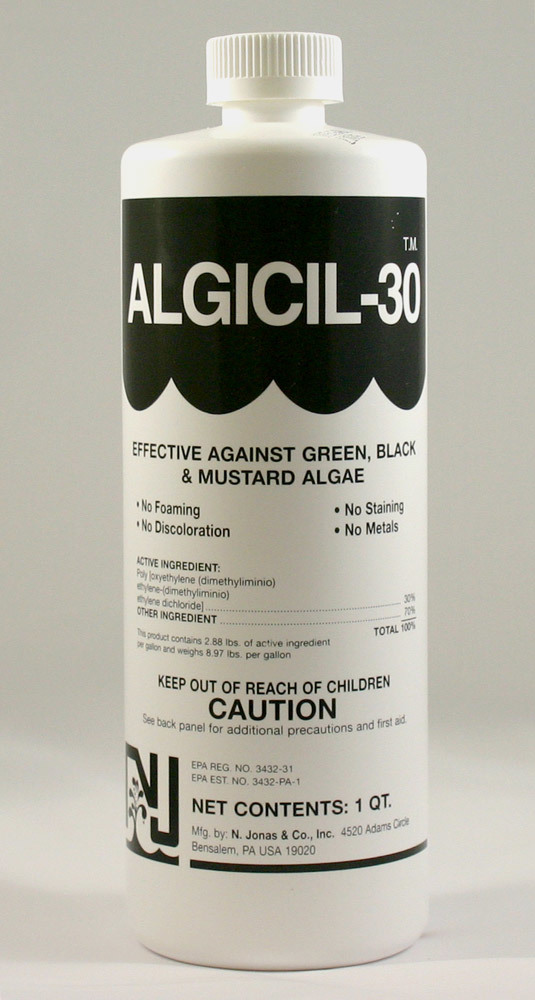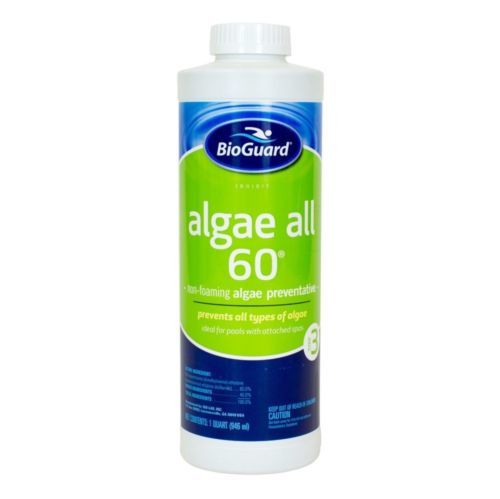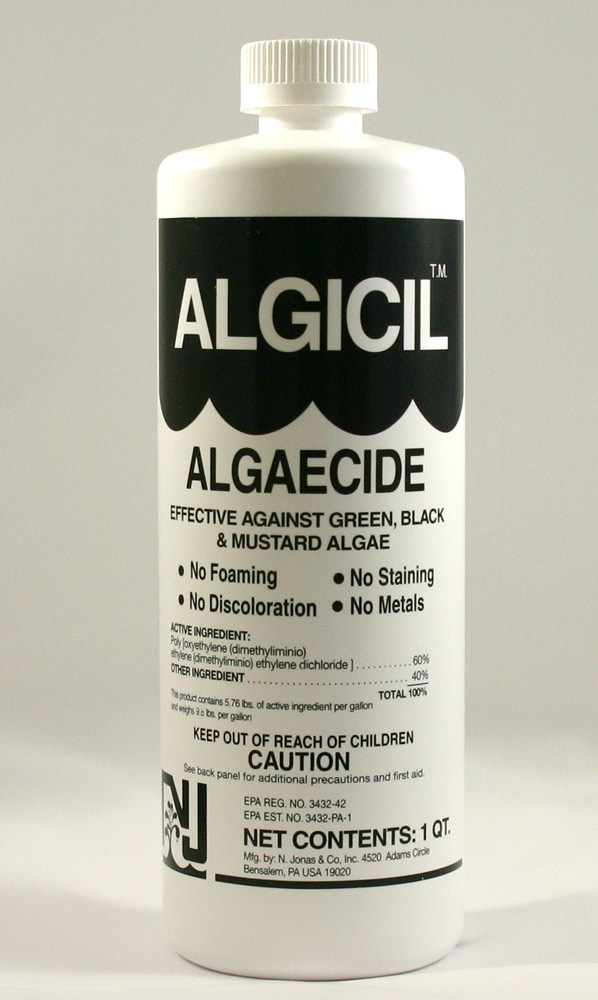Published by EZ Pool & Spa Supply on 07/29/2019
All About Algae
Algae can be a bothersome and annoying part of owning a pool. Getting rid of it involves doing some homework and finding the source of the problem. Algae can access your swimming pool through people’s bathing suits as well as through the elements such as wind and rain. This contamination is then exacerbated by a lack of circulation in the pool. The old adage that we’ve mentioned before is “a rolling stone gathers no moss” and the same holds true with water. If your pool pump is consistently moving the water around it decreases the potential of any algae turning into a full bloom. Make sure you are also back-washing your filter as is needed.
Algae is essentially a plant that is airborne and enters a pool, wreaking havoc over time. Generally, there is no specific test for the presence of algae. You cannot take a sample of water to your local supply store and get a report like you can for many other things. A pool specialist will most definitely be trained to ask questions geared toward diagnosing the problem. Most likely a chlorine test can be undertaken to see what the level of free chlorine is in the pool. Usually, in a pool with live active algae, there is either no or very little free chlorine present in the water. This is pretty much the case for the fact that chlorine will be used or spent fighting off the algae. It doesn’t necessarily kill off all the algae, but it gets used up in the battle. Sometimes you can even run across instances where free chlorine will register high but there are still live and visible algae in the pool. In this case the algae have most likely become resistant to chlorine, similarly to bacteria becoming resistant to medicines. This usually comes into play when a pool hasn’t been shocked on a regular basis. When you shock the pool, you increase the level of free chlorine in the pool which disrupts what the algae has gotten used to and successfully kills the algae invasion.
Long stretches during the summer months that are consistently hot and sunny really assist in the process that algae need to bloom. Algae contains chlorophyll and utilizes photosynthesis to grow. It takes in carbon dioxide and expends oxygen as a byproduct. Pool algae grows in both the sun and the shade but the threat certainly increases during the really hot and really sunny months. Algae, just like most everything, needs food to survive and in a swimming pool there is no shortage of organic material to eat. Pools with a high number of bathers bring in food, the wind blows additional materials in, and even the remains of previous algae in the pool, can suffice for food for the current outbreak.
Algae is a menace to put it lightly. It clouds the water reducing depth perception and making you not be able to see to the bottom, it also clogs a pool filter which decreases its effectiveness, increases the need for more backwash and a need for more frequent filter media replacements. While the algae outbreak is not necessarily directly harmful to people, the conditions become a safe breeding ground for bacteria such as E-coli. In the short, algae is not a good thing.
Getting rid of the algae typically depends on identifying the type that you are dealing with. Green algae is the most common to deal with and floats in the pool but also clings to the walls. A green algae infection can typically be seen by the water becoming less clear and be accentuated by an ugly green tinge and slimy walls. Another type of algae is yellow or mustard. This is often found on walls in parts of a pool that remain shady and is known to be hard to combat as it has a tendency to come keep coming back. This is one algae form that should be addressed as soon as possible. Another type of algae is the pink variety which is technically more of a fungus and is known to invade crevices, corners, and cracks. Pink algae is also known as pink slime and is usually found in certain areas of the pool as small pink spots. The last and by far the most difficult algae to deal with is the black algae which invades a pool and manifests itself as dark black, blue, or green spots that typically don’t grow over the size of a dime. What makes black algae so hard to get rid of is the fact that is actually has roots that can grab ahold of any rough surfaces and unless the roots are dealt with, the black algae will return. Attacking the walls of the pool with a brush first off will help get it off the walls. Depending on the type of pool you have will dictate what type of brush you use. If you have a gunite pool you can use a steel brush, if you have a vinyl pool, use a nylon swimming pool brush.
Getting a proper understanding of your current water chemistry is an important step in being able to resolve all of the underlying issues. Using test strips, check your pH levels. It should be between 7.2 - 7.6, alkalinity between 80 - 120 ppm, and calcium hardness between 200 -400 ppm. The next thing to do is to shock your pool with a chlorine-based shock. You usually need 1 pound of shock for every 10,000 gallons of pool water when there is no algae problem, so we would say, if the algae issue has been positively identified to go ahead and double that recipe to 2 pounds per 10,000 gallons. After adding the shock you’ll want to allow the pump and filter enough time to do their jobs. You should usually wait anywhere from 12 to 24 hours to monitor the progress. You can actually repeat this process again if there are really no marked changes.
Make no mistake, you have to vacuum the pool and get the visible algae out so that it does not start forming again. This is best accomplished by vacuuming the pool to waste. If you use your filter to vacuum make sure it is in fact set to waste, bypassing the filter and ejecting what you are sucking up directly out of the pool.
Yes, it’s true, Algae is always present in a pool, it just depends to what degree it is there that’s the problem. Even the clearest of pools typically contain trace amounts of algae that, given the right conditions, will take every opportunity to multiply and bloom. The perfect conditions occur when the pool pump is not operating at an optimal level, the pH level in the water rises, and/or the filter is not operating correctly.
Of course, there are many things available to help both prevent and battle an algae outbreak .
Phosphate Removers:
These remove phosphates from the pool which are tasty snacks for growing algae. Phosphates may get in the pool from fertilizers, mulch, leaves, or other organic materials. You can test your pool for phosphates with testing strips, and treat for removal with:
Algaecides and Algaestats:
Quaternary Ammonium Compounds:
These are lower grade algaecides; they usually have a “10” printed on them
indicating 10% active ingredients and are commonly referred to as “Quats”. They
are usually inexpensive but are known to produce a small amount of surface foam
when being used. They are more effective as an algae preventer than as an algae
killer.
Polymers:
Polys are long chemical chains that are effective as both an algaecide and an
algaestat. They are non-foaming and come in strengths of 30% or 60% active
ingredient. These work extremely well as an all-around solution to algae
growth.
Other algae treatments include Copper based, Silver based, and Gold based which all have positives and negatives of use. Copper is a proven algaecide and algaestat. Available in varying non foaming strength of 3 - 10%. it works very well on all types of algae but can also stain some surfaces. Silver has been shown to be an effective bacteriostat, which means that it works to prevent bacteria from reproducing. Non foaming and effective with pink algae.
We would be happy to work with you on any preventative or ongoing issues and would be able to recommend the products below that could help. Contact us here, Give us a call, or Stop into one of our Retail Locations today.
Maybe it's not algae that's clouding your pool? Read our other articles that may help!
What Else Could Be Making My Pool Water Green?










